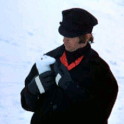Lamb Stew and figuring out "done-ness"
So I have some bone-in lamb shanks that I was going to make stew with this weekend and I thought I would ask a question of the experts here. When it comes to slow-cooking bone-in meat like this in a Dutch-oven with the oven set at say 300-325 (I'm using the salt/pepper/flour-dusting, then searing on the stove-top, deglazing with stock and wine and demi and then adding meat back in clapping on the lid and putting the whole thing in the oven -- technique) is there a way (other than practice) to determine when the meat is perfectly cooked? I've used this technique with beef shoulder chunks and (I'm embarrassed to admit) overcooked the meat. I'm trying to achieve that mouthwatering, tender, pull the meat-apart in strands consistency, and I'm struggling to get there. I've undercooked, overcooked, got it perfect by accident, and I'd like to get a little more scientific about the weight of the meat, the temperature, and the time it takes to cook. Any tips and tricks much appreciated.
Best,
M
8 Comments
This is one of the few times I will disagree with my friend and esteemed colleague Pierino. I will argue that the oven provides even heat from all directions plus it's got a thermostat which makes for easy, repeatable temperature control. You can do it either way but here's my take:
There are reasons for braising at higher temperatures but above 250F the braising liquid will reach a boil unless the pot is left uncovered. That's not low and slow.
The basics behind the technique: Enzymatic action peaks right before the enzymes denature, between 120F and 130F. The longer the meat stays close to, but under that temperature, the more tender and flavorful it will become.
However, conversion of collagen (connective tissue) to gelatin doesn't begin until the meat reaches an internal temperature of around 140F. The longer the roast exceeds 140F, the more tender it will become.
To give a tough cut of meat maximum advantage, sear then set the oven to 200F, lid ajar, for 2 hours (vessel target temperature = 120F). Then cover and raise the oven to 250F and allow the roast to slowly come up past the 140 mark and finish cooking. Allow to cool for at least 30 min. or, ideally, down to 125F in the braising liquid, some of which will be reabsorbed in the process.
Or just set the oven between 225 and 250F from the beginning and walk away.
Don't confuse undercooked with overcooked. There's a point midway where the meat will toughen but later it will begin to fall apart as the connective tissue is broken down.


